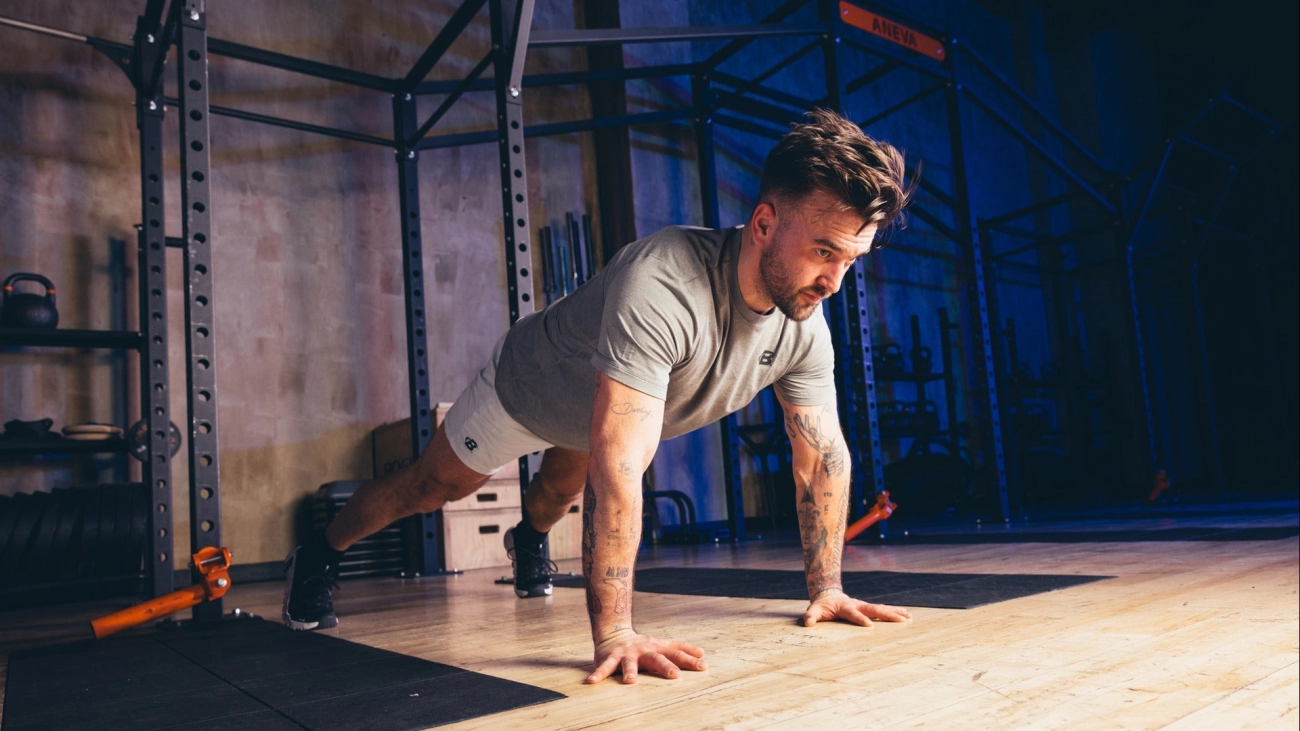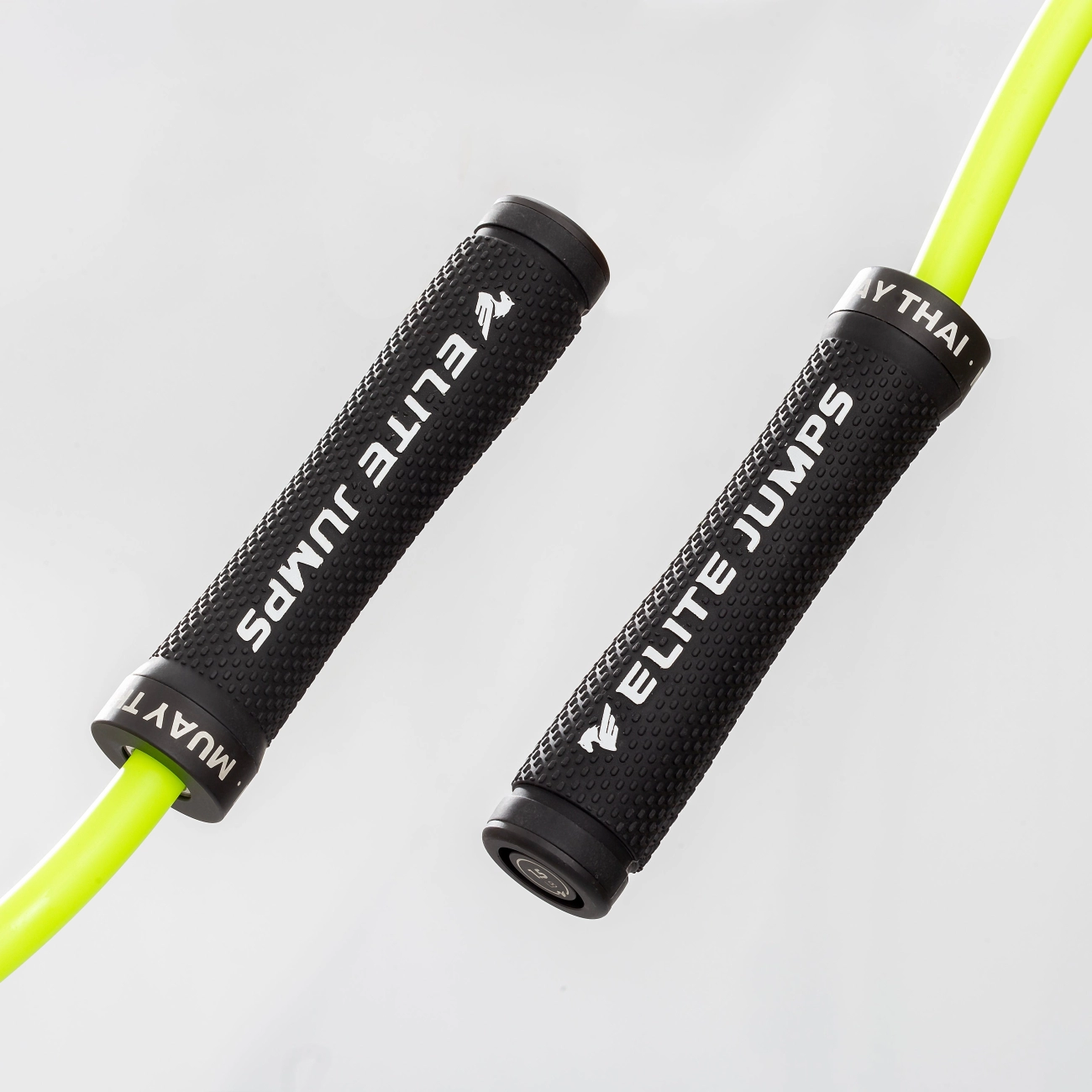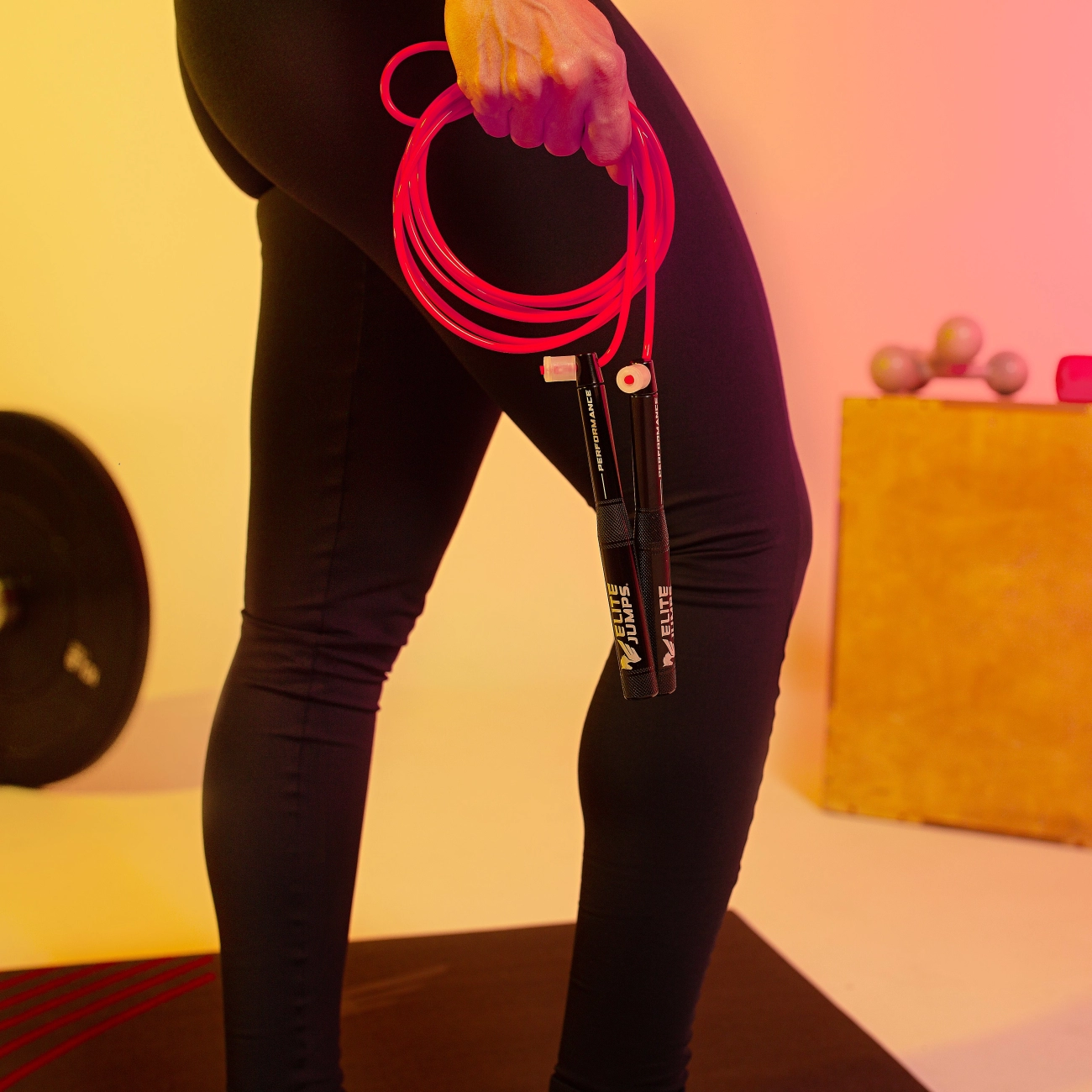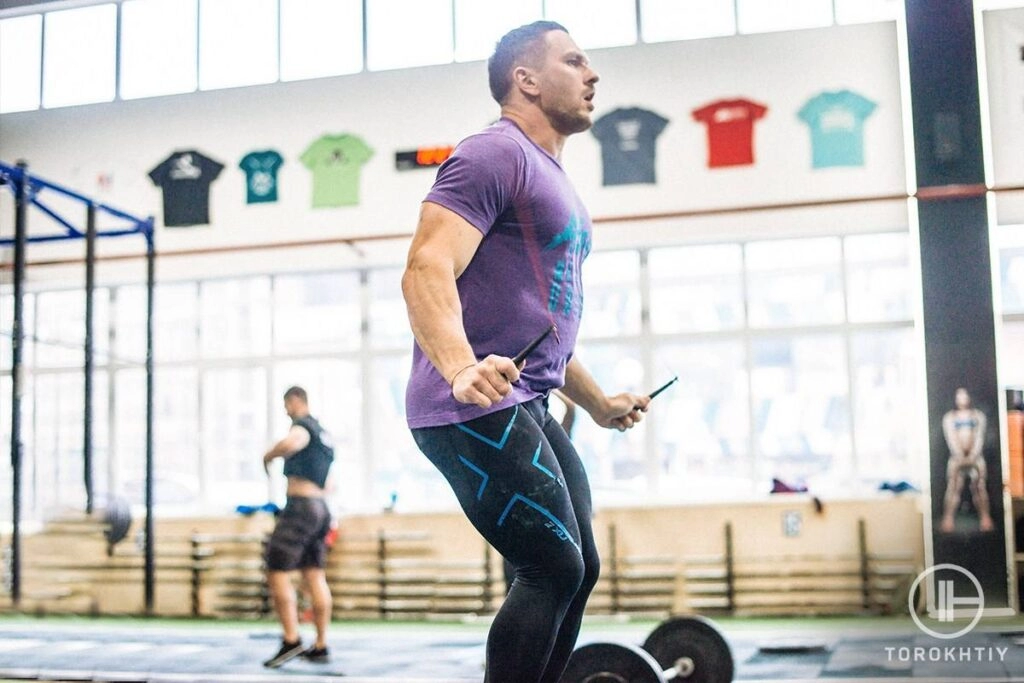Primary Muscles Worked by Jump Rope
Jump rope is an effective workout that targets several key lower body muscle groups, making it a reliable way to improve strength, endurance, and coordination. When you jump rope, your legs are doing the heavy lifting, and the main muscles involved include the calves, quadriceps, hamstrings, and glutes.
Calves
Your calf muscles (gastrocnemius and soleus) get a major workout every time you push off the ground to jump. This constant plantar flexion builds strength and endurance, which improves your ability to sustain longer jump rope sessions and enhances your overall leg power. The calves play a critical role in absorbing impact and providing quick, explosive movements.
Quadriceps
The quadriceps, located at the front of your thighs, help with knee extension each time you jump. These muscles work to stabilize your knees and maintain balance during repeated jumps. Strengthening the quadriceps through jump rope training supports better jump height and reduces injury risk in high-impact activities.
Hamstrings
The hamstrings run along the back of your thighs and assist with hip extension during the jump. While they work synergistically with the quadriceps, the hamstrings also help control your landing, preventing excess strain on your knees. Consistent jump rope exercise tones and strengthens these muscles, contributing to improved leg stability.
Glutes
Your gluteal muscles, particularly the gluteus maximus, contribute to hip extension and overall power during jumping. Engaging the glutes in jump rope workouts helps develop explosive strength and supports hip mobility, which is vital for efficient, injury-free movement.
Jump rope effectively combines these primary lower body muscles in rhythmic, repetitive motion, making it a powerful tool for a comprehensive leg workout. This muscle engagement improves not only strength but also coordination and cardiovascular endurance, essential for full body fitness.
Upper Body Muscles Engaged in Jump Rope Exercise

Jump rope is often thought of as a lower-body workout, but it actually engages several upper body muscles too, making it a solid upper body workout jump rope enthusiasts love.
Forearms and Wrists
Your forearms and wrists get a consistent workout as they control the rope’s rotation. This muscle engagement improves grip strength and wrist stability, which benefits other exercises and daily tasks. The repetitive motion helps develop endurance and coordination in these smaller muscle groups.
Shoulders Deltoids
The shoulder muscles, especially the deltoids, work hard to keep the rope moving smoothly and at the right speed. Whether you’re doing fast double unders or a basic jump, your shoulders are lifting and rotating the rope, building both strength and endurance over time.
Biceps and Triceps
While jumping, your biceps and triceps stabilize the arms and control the rope’s swing. The biceps work during the pulling motion, and the triceps help with the pushing action that keeps the rope moving in a steady rhythm. This consistent activation helps tone these muscles and enhances overall arm strength.
By engaging these upper body muscles along with your lower body and core, jump rope offers a balanced muscle workout that supports full body coordination and fitness. Using a quality PVC jump rope, like those from PVCJumpRope.com, can ensure smooth rotations and better muscle engagement throughout your workout.
Core Muscles Activated in Jump Rope Exercise Muscles Targeted
Jump rope isn’t just about your legs and arms—it’s a full-core workout that actively engages abdominals and lower back muscles to keep you balanced and stable.
Abdominals
During jump rope workouts, your abdominal muscles work hard to maintain posture and control your body’s movement. Every jump requires you to keep your torso steady, which means your rectus abdominis (the “six-pack” muscles) and obliques are constantly engaged. This not only helps improve your core strength but also enhances your overall balance and coordination.
Lower Back
The lower back muscles play a crucial role by supporting your spine and helping maintain an upright position while jumping. Consistently working these muscles through jump roping helps prevent lower back pain and builds endurance for other physical activities. Strong lower back muscles also contribute to better posture, which is vital for effective workouts and daily movement.
By activating both the abdominals and lower back, the jump rope provides a balanced core workout, improving your stability and making it easier to perform other exercises efficiently. This is why the jump rope is often considered a full body workout jump rope that builds strength from the inside out.
For more tips on maximizing your jump rope workouts and understanding muscle groups used in jump rope, check out our full guide.
Full Body Muscle Coordination and Benefits of Jump Rope Workout
Jump rope is more than just a cardio tool—it’s a full body workout that demands coordination and engages multiple muscle groups simultaneously. When you jump rope, your body works as a unit, improving muscle synchronization and overall functional fitness. This jump rope muscle workout activates your legs, core, and upper body muscles together, making it highly efficient.
Muscle Coordination in Jump Roping
Each jump requires your calves and leg muscles to push off the ground, while your core stabilizes your spine to maintain balance. At the same time, your forearms, wrists, and shoulders control the rope’s rotation. This means muscle groups used in jump rope don’t work in isolation—they cooperate to create smooth, controlled movements. This enhanced coordination is great for sports and daily activities that require quick reflexes and balance.
Benefits of Full Body Muscle Engagement
- Improves endurance and strength across various muscle groups, helping you build a balanced physique.
- Enhances muscle timing and rhythm, reducing injury risks by promoting proper movement patterns.
- Boosts your metabolic rate since engaging multiple muscles at once burns more calories.
- Strengthens connective tissues and joints via repetitive yet controlled movements, which is great for long-term joint health.
- Improves posture and athletic performance by activating the core and upper body during jumping routines.
By choosing the right jump rope, like a quality PVC jump rope from PVCJumpRope.com, you can further enhance this full body coordination. A lightweight rope with smooth rotation helps maintain proper form, allowing muscles to engage fully without interruption.
In short, jump roping trains both your muscular and nervous systems, giving you a comprehensive full body workout that supports strength, coordination, and endurance all at once.
Additional Benefits of Muscle Engagement from Jump Rope
Jump rope workouts go beyond just targeting specific muscle groups. The muscle engagement involved offers several extra benefits that improve overall fitness and function.
Improved Muscle Endurance and Coordination
Because jump rope is a full body workout, it demands continuous muscle activation, which helps improve muscle endurance. The repetitive jumping and arm movements train your muscles to perform longer without fatigue. This also enhances muscle coordination, as your legs, arms, and core have to work together smoothly.
Enhanced Balance and Stability
Engaging your core muscles and lower body during jump rope sessions strengthens stabilizing muscles around your joints. This leads to better balance and stability, reducing the risk of injuries during other activities.
Increased Muscle Tone and Definition
The constant tension on muscles like calves, quads, shoulders, and forearms from jump roping helps improve muscle tone and definition. It’s a great way to add lean muscle mass without heavy weights, making it ideal for muscle conditioning.
Boosted Metabolic Rate and Fat Burning
Muscle engagement in jump rope increases your metabolic rate because maintaining muscle tension burns more calories, even after your workout. This supports fat loss while preserving muscle, so you get stronger and leaner at the same time.
Supports Joint Health and Muscle Responsiveness
The low-impact nature combined with consistent muscle activation strengthens muscles around the joints, improving joint support. It also enhances muscle responsiveness, making your movements quicker and more efficient in daily life or sports.
Jump rope workouts offer more than just cardio benefits—they build stronger, more resilient muscles that improve your overall health and athletic performance.
How Different Jump Rope Techniques Target Muscles Differently

Jump rope exercises offer variety, and the way you jump can change which muscles get the most work. Understanding the differences between techniques like basic jump, high knees, and double unders helps you target specific muscle groups and tailor your workout for either strength or endurance.
Basic Jump Muscle Focus
The basic jump keeps things simple and steady. It mainly works the calves, quadriceps, hamstrings, and glutes, while lightly engaging your core. This move is great for building muscle endurance and improving overall coordination. Since the rhythm is consistent, it’s easier to maintain longer sessions, making it ideal for anyone starting a jump rope muscle workout.
High Knees for Intense Muscle Activation
High knees take your jump rope workout up a notch by driving your knees toward your chest with each jump. This technique activates the core muscles more intensely, especially the abdominals and hip flexors. It also challenges the quadriceps and glutes harder than a basic jump. The fast pace and high impact make high knees effective for both cardio and strength, helping improve muscular power and balance.
Double Unders for Full Body Strength
Double unders require the rope to pass twice under your feet during a single jump. This advanced move demands stronger forearms and wrists to control the faster rope speed, while engaging the shoulders, biceps, and triceps for stability. The calves, core, and leg muscles work harder due to the higher jump and landing impact. Double unders are excellent for strength training, increasing muscular endurance and coordination across your entire body.
Modifying Workouts for Strength vs Endurance
- For Strength: Focus on high-intensity techniques like double unders and high knees. Incorporate short, explosive intervals with rest to allow muscle recovery and maximize muscle activation.
- For Endurance: Stick with longer sets of basic jumps or moderate-paced high knees. Maintaining steady movement helps build cardiovascular fitness and muscle stamina without overexertion.
Adjusting your jump rope technique based on your goals not only maximizes muscle engagement but also keeps your workouts fresh and challenging. For optimal results, using a quality jump rope like the 5mm PVC jump rope from PVCJumpRope.com can improve your control and consistency across all these techniques.
Why Using a Quality PVC Jump Rope by PVCJumpRope.com Enhances Muscle Workout
When it comes to a jump rope muscle workout, the quality of your rope plays a big role in the results you get. Using a quality PVC jump rope by PVCJumpRope.com offers several advantages that directly impact how well you engage and strengthen muscles during your sessions.
Smooth and Consistent Rotation for Better Muscle Activation
PVCJumpRope.com jump ropes are designed for smooth, consistent rotation thanks to their high-quality PVC material and precision bearings. This steady swing helps maintain a steady rhythm, allowing your calves, forearms, shoulders, and core muscles to work efficiently without unnecessary pauses or jerks. Compared to lower-quality ropes that snag or tangle, this smooth motion keeps your muscle groups consistently engaged throughout your workout.
Lightweight Yet Durable for Endurance and Strength Training
The PVC construction used by PVCJumpRope.com is lightweight, which reduces fatigue and lets you jump longer, boosting your endurance and muscle stamina. At the same time, these ropes are strong enough for intense training like double unders or speed jumps, which help build muscle strength especially in your legs, shoulders, and core. This balance between durability and weight means you get a full-body workout that challenges muscles effectively.
Customizable Design Fits All Skill Levels
PVCJumpRope.com offers jump ropes that can be adjusted to your height and jumping style, so you can maintain proper form—a key factor in maximizing muscle activation. Proper sizing reduces the risk of missteps and allows you to focus on hitting those major muscle groups without distraction. Whether you’re working on power, coordination, or endurance, using a rope that fits makes every jump count.
Enhanced Grip for Better Control and Muscle Engagement
The handles on PVCJumpRope.com PVC jump ropes are designed for a comfortable, secure grip. This means your forearms, wrists, and shoulders get properly engaged without straining to hold onto the rope. A solid grip enhances your control over the rope’s swing, increasing the intensity of muscle work while reducing the chance of fatigue or injury during your workout.
Choosing a PVC jump rope by PVCJumpRope.com enhances your jump rope exercise muscles targeted by ensuring smooth rotation, durability, a perfect fit, and solid grip. All these factors contribute to a more effective full-body workout that targets the calves, core, upper body, and lower body muscles deeply, helping you to build strength, endurance, and coordination safely and efficiently.
Tips for Beginners to Maximize Muscle Activation in Jump Rope Workouts
Starting a jump rope muscle workout routine can be highly effective if you focus on the right techniques from the beginning. Here are some practical tips to help you maximize muscle engagement and get the most out of every session.
Warm-up and Stretching for Better Muscle Activation
- Always begin with a warm-up to prepare your muscles and joints. Spend 5-10 minutes doing light cardio like walking or jogging.
- Incorporate dynamic stretches focusing on calves, hamstrings, shoulders, and wrists. This boosts blood flow and reduces injury risk.
- Warming up helps your core muscles jump rope benefits by improving flexibility and readiness for the workout ahead.
Use Proper Form and Pacing to Target Muscles Effectively
- Keep your elbows close to your sides and use your wrists to turn the rope, which really engages your forearms and wrists.
- Maintain a slight bend in your knees to protect your joints and actively work your quadriceps and hamstrings.
- Avoid jumping too high—aim for just enough clearance to swing the rope. This helps focus on the calves workout jump rope without wasting energy.
- For muscle endurance, keep a steady and moderate pace, but if you want strength, introduce bursts of higher intensity like double unders or fast jumps.
Progressive Training to Build Strength and Stamina
- Increase your session length or intensity gradually. Start with short intervals and add time as your muscles adapt.
- Mix in different jump rope techniques to engage various muscle groups used in jump rope. This prevents plateaus and builds better overall strength.
- Track your progress and challenge yourself with both speed and resistance (like weighted ropes or faster rotations) to elevate your jump rope strength training.
By focusing on warm-ups, maintaining proper form, and progressively increasing your effort, you’ll make sure every jump rope session translates into real muscle gains and fitness improvements. Whether you’re using a PVC jump rope for fitness or another type, these basics set you up for success.



